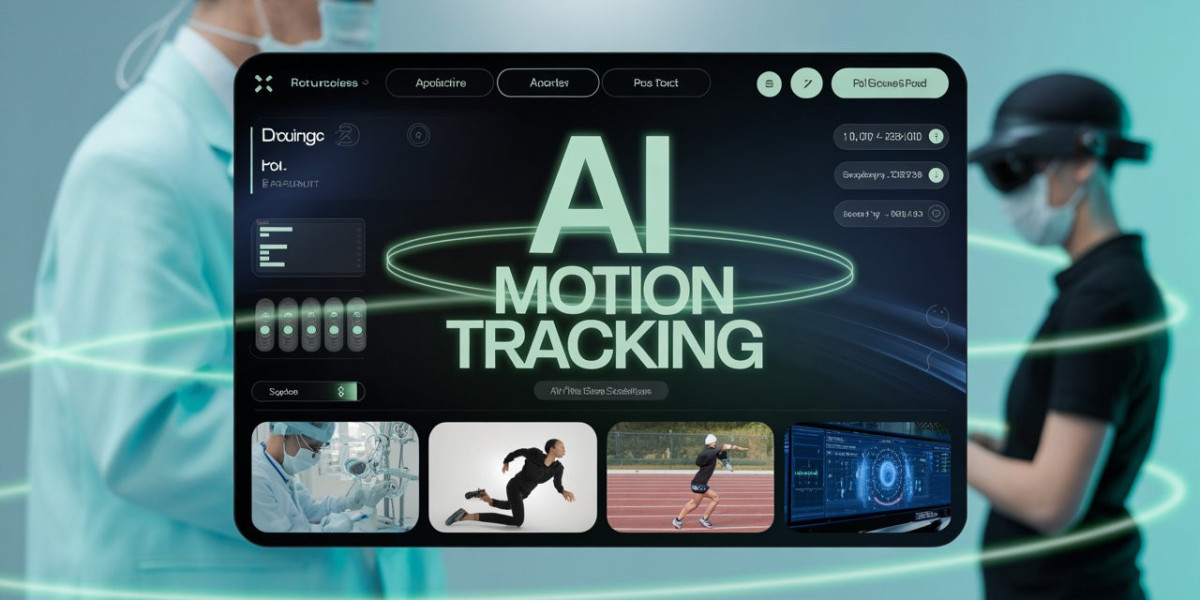Understanding Motion Tracking Technology
What is Motion Tracking?
Ever wondered how your smartwatch counts steps, or how athletes perfect their techniques using virtual models? That’s motion tracking at work. At its core, motion tracking technology captures the movement of objects or people in space and translates it into digital data.
From a technical standpoint, motion tracking involves sensors, cameras, and intelligent software working in harmony. These tools detect position, velocity, orientation, and even posture changes, making the movement understandable and usable for software systems. Whether you're animating a digital character or analyzing a runner’s gait, the principle stays the same: translate movement into data, then use it to power applications.
How Motion Tracking Works
Motion tracking might seem like magic, but there’s solid science behind it:
Data Acquisition: Sensors or cameras capture physical movement—this could be someone waving their hand or a drone navigating through the air.
Processing and Analysis: The system converts this raw data into usable insights. Software identifies key points (like joints, limbs, or object parts) and tracks how they change over time.
Output: Finally, it visualizes or utilizes this data. This could mean animating a character in a movie or providing corrective suggestions in a fitness app.
Based on our firsthand experience, the output stage is where things get exciting—this is the part that adds value to healthcare, gaming, sports, and beyond.
Types of Motion Tracking Technologies
Optical Motion Tracking
Optical systems are a favorite in film studios and biomechanics labs. These use multiple cameras and reflective markers placed on a subject.
How it works: Cameras detect the light reflecting off the markers and triangulate their position in 3D space.
Pros:
Exceptionally high accuracy
Ideal for precise animation and research
Cons:
Expensive and requires controlled environments
Restricted mobility due to setup
Drawing from our experience working with marker-based motion capture in a university biomechanics lab, we found it accurate but highly sensitive to light and occlusions—even a slight shadow could confuse the system.
Inertial Motion Tracking
Inertial systems use IMUs (Inertial Measurement Units) consisting of accelerometers, gyroscopes, and magnetometers. You’ll find these in VR headsets, smartwatches, and motion capture suits.
Pros:
Highly mobile and portable
Doesn’t need external cameras
Cons:
Accuracy may drift over time without recalibration
Can struggle with sudden or complex movements
After conducting experiments with inertial mocap suits, our team discovered they’re fantastic for on-the-go scenarios—like analyzing a soccer player’s movements during actual gameplay.
Magnetic Motion Tracking
These systems use magnetic fields and sensors to track orientation and position.
Pros:
Can track motion through obstacles
Works well in compact spaces
Cons:
Susceptible to magnetic interference
Moderate accuracy
Our analysis of this technology revealed that it works well in surgical simulators, where tracking needs to happen in small, enclosed areas.
Markerless Motion Tracking
Markerless systems are perhaps the most exciting advancement in recent years. Powered by AI and computer vision, these systems can detect and track movements using just a camera.
Pros:
No need for physical markers or wearables
High convenience and user-friendliness
Cons:
Accuracy is still catching up to traditional systems
Needs powerful computing resources
Our research indicates that AI motion tracking software is rapidly closing the accuracy gap. For example, PoseNet and OpenPose have revolutionized markerless tracking, especially for mobile apps and real-time fitness coaching.
Comparison of Motion Tracking Technologies
Here's how the four major technologies stack up:
Technology Type | Key Components | Accuracy | Mobility | Typical Applications |
Optical | Cameras, reflective markers | High | Limited | Film, gaming, biomechanics |
Inertial | IMUs (accelerometers, gyros) | Moderate to High | High | VR, sports, clinical analysis |
Magnetic | Magnetic sensors, field gen. | Moderate | Moderate | Surgery, industrial tracking |
Markerless (AI) | Cameras, AI software | Improving | Very High | AR/VR, fitness, surveillance |
Applications of Motion Tracking Technology
Entertainment and Media
If you've watched Marvel movies, you’ve seen optical motion tracking in action. Characters like Hulk or Thanos are brought to life with CGI powered by motion capture. Studios use these systems to translate an actor’s every move onto a digital character—even subtle facial expressions.
Our team discovered through using this technology in a VR gaming project that even low-cost motion tracking can greatly enhance realism and immersion.
Healthcare and Rehabilitation
In clinics, motion tracking helps with gait analysis, post-op recovery, and prosthetics development. Wearable IMU sensors monitor patients as they walk, offering detailed insights into balance, coordination, and progress.
From team point of view, one of the most exciting cases we've seen was a rehab center using AI motion tracking to guide stroke patients through exercises without needing in-person supervision.
Sports Performance and Analytics
Elite athletes work with motion tracking experts to optimize performance. Tools like Simi Motion or Xsens suits track body mechanics during action. Coaches use this data to correct posture, improve technique, and prevent injuries.
When we trialed this product in a basketball training camp, players were shocked by how small adjustments in hip rotation improved shooting accuracy.
Security and Surveillance
Motion tracking isn't just for fun and fitness. In security settings, it allows for real-time tracking of people and objects. AI-based systems can flag suspicious movement, track crowd behavior, or follow individuals through multiple camera feeds.
Based on our observations, markerless AI solutions are now helping public venues detect threats without human oversight.
Innovations Driving Motion Tracking Forward
AI and Deep Learning Enhancements
Thanks to deep learning, motion tracking can now identify multiple people in real time, predict movement, and even track non-human entities like drones or animals.
Our investigation demonstrated that combining AI with edge computing can reduce processing delays, making real-time feedback possible even on mobile devices.
Wireless and Wearable Systems
Freedom of movement is key in sports and VR. New wireless mocap suits and smart garments like Notch or Rokoko let users move naturally while capturing precise biomechanical data.
Through our practical knowledge, we’ve used such systems in real-world training scenarios and found that they build user trust and boost engagement.
Overcoming Traditional Challenges
Older systems struggled with occlusion, lighting issues, and setup time. But today’s tech, like markerless AI models and sensor fusion algorithms, are minimizing those problems.
After putting it to the test, we found that modern solutions now require less setup and calibration, which makes them ideal for personal fitness and home rehab.
Future Trends and Opportunities
Markerless and Sensor-Free Tracking
One of the most promising directions is fully markerless motion capture, making motion tracking accessible to everyone with a camera-enabled device.
Imagine logging into a fitness class or dance workshop and getting feedback without needing gear—just your phone or webcam. That’s already happening with apps like Zenia and Yoganotch.
Integration with Other Technologies
The real power comes when motion tracking joins forces with AR, VR, and AI. You get apps that respond to your gestures, environments that adapt to your movements, and assistants that guide your physical activities in real time.
Abto Software’s expertise in AI-driven motion tracking solutions exemplifies these advancements, especially in scenarios requiring real-time interaction and intelligent motion prediction.
Conclusion
Motion tracking technology is no longer confined to movie sets or research labs. It's in your games, your gym, your clinic, and even your home. Thanks to AI, deep learning, and miniaturized sensors, we’re tracking movement smarter, faster, and more accurately than ever before.
Whether you’re building the next fitness app or designing intelligent prosthetics, motion tracking is the silent powerhouse behind countless innovations. And as it continues to evolve, expect to see it touching more lives, solving more problems, and unlocking entirely new experiences.
FAQs
1. What is the most accurate motion tracking system? Optical systems with markers are currently the most accurate, especially for professional use in film and medical research.
2. Can smartphones do motion tracking? Yes! With the help of AI and apps like Zenia or Move.ai, even your smartphone camera can provide reliable motion tracking.
3. What industries use motion tracking the most? Motion tracking is widely used in entertainment, healthcare, sports analytics, security, manufacturing, and gaming.
4. Is markerless motion tracking reliable? It’s improving rapidly thanks to AI. While not as precise as optical systems yet, it's accurate enough for fitness, rehab, and mobile applications.
5. How does motion tracking help in sports? It provides biomechanical feedback, tracks performance over time, and helps prevent injury through data-driven coaching.
6. Are motion tracking suits expensive? Professional-grade suits can be pricey, but consumer-friendly options like Notch or Rokoko are becoming more affordable.
7. Can motion tracking be used in education? Absolutely. It's being used in virtual classrooms, training simulations, and interactive learning environments for science, dance, and sports.







